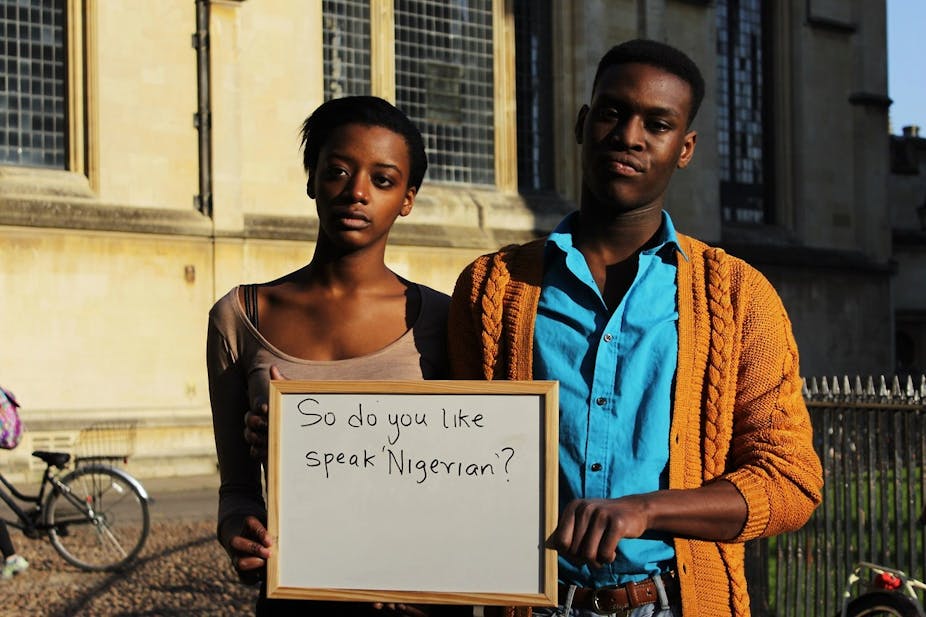New analysis of the ethnic diversity of both university students and the academics in charge of their education has revealed wide disparities in ethnic representation compared to UK population averages.
Some elite universities have an under-representation of black and Asian students. And across the board, there remains a stark under-representation of black and Asian academics at management level in UK universities.
The analysis of data on UK-domiciled students from the Higher Education Statistics Agency’s (HESA) Student Record shows that in 2012-13, black and Asian students were under-represented in the Russell Group of 24 leading UK universities, when compared to the average ethnicity for 15- to 29-year-olds from the 2011 census for England and Wales. (Data for Scotland and Northern Ireland isn’t uniformly comparable.)
Out of the 412,980 students at Russell Group universities, 80.7% were white, 2.6% were black and 9.7% were Asian. This compares to national youth averages of 81.2% white, 3.9% black and 10.5% Asian.

Meanwhile, the 11 universities from the former post-1994 group, had a big over-representation of black students, compared to the national youth average, but an under-representation of Asian and white students. The same was true for the university members of the Million+ group, and the institutions in the University Alliance.
White and Asian students are under-represented in the university population as a whole, while black students are over-represented. There is a 14.3% under-representation of Asian students, and a 3.1% under-representation of white students. This compares to a 56.4% over-representation of black students across the student body, including at undergraduate and post-graduate levels.
On the top
When it comes to higher education managers in universities, the data shows under-representation of black and Asian academics. The HESA data shows that there are no black university vice-chancellors in the UK, although the ethnicity of ten is not given. Also, the HESA data records no Asian vice-chancellors, but there is at least one: Gerald Pillay, the vice-chancellor of Liverpool Hope University, who is South African.
Out of 525 deputy vice chancellors or pro-vice chancellors, ten are Asian, none are black, five are listed as “other” (including mixed race) and the ethnicity of 15 others is not given. HESA data rounds up or down to the nearest five.
When compared to UK adult census data, which shows 3.3% of the population are black and 7.5% are Asian, this shows a large under-representation of black and Asian academics in top management positions.

Further down the management chain, out of 3,220 heads of major academic areas and head of schools, 20 were black and 90 were Asian – again a marked under-representation against the UK average. And out of heads of sub-sets of academic areas, and professors, 95 were black, and 1,025 were Asian, out of a total of 19,855.
“The latest data clearly shows that UK higher education still has a big problem when it comes to diversity in its upper echelons,” William Ackah, lecturer in Community and Voluntary Sector Studies at Birkbeck College said. He suggested the government should consider intervening to ensure that equality was achieved.
The analysis of student ethnicity after the Higher Education Funding Council for England released a report on the achievement of students from different ethnic backgrounds at university. It found that 72% of white students who started university with A-levels of BBB got a first or 2.1, compared with 56% of Asian students and 53% of black students.
Vikki Boliver, lecturer in sociology at Durham University, who has carried out research on applications and acceptances of different ethnic groups at Russell Group universities, said at admissions level, ethnic minorities are less likely to get admissions offers at Russell Group universities.
“It may be the case that ethnic minorities’ grades are more likely to be under-predicted,” she said. If this were true, she said it would give backing to the argument for a post-qualifications application system for universities, with “judgements based on fact, rather than predictions”.
Les Ebdon, the director of fair access to higher education at the Office for Fair Access (OFFA) and the former Vice-Chancellor of the University of Bedfordshire, said: “Under-representation in higher education by ethnicity is a complex issue. Many ethnic groups are well-represented in higher education overall, but students from black and minority ethnic backgrounds tend to be concentrated in certain universities and subjects and there are significant disparities between ethnic groups in terms of the level of degree that students achieve, and what kind of work or further study they go on to do after graduation.”
Ebdon said OFFA expected universities to look at which ethnic groups or sub-groups are under-represented or under-performing, and respond appropriately.
You can access the full data behind this story here.
Related: Hard Evidence: why aren’t there more black British students at elite universities?

